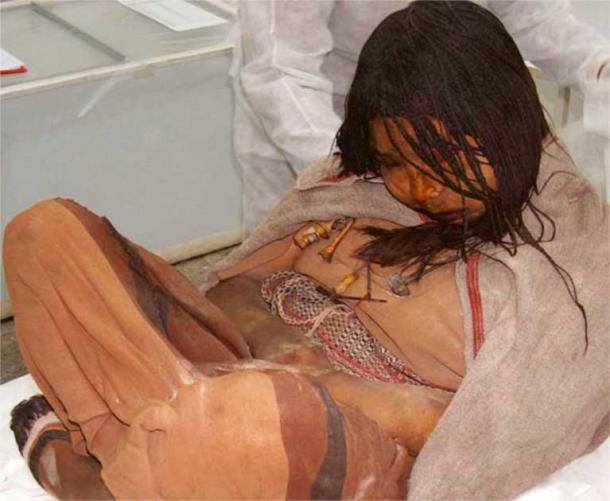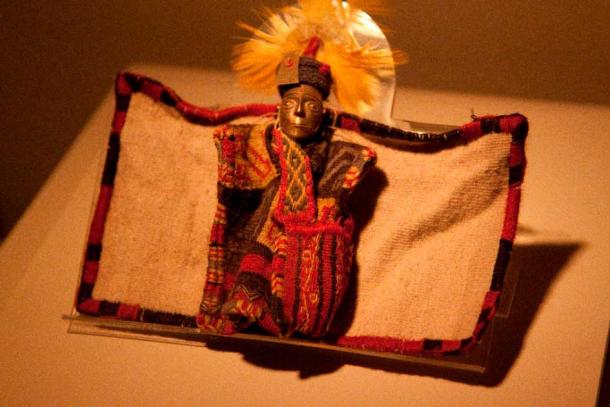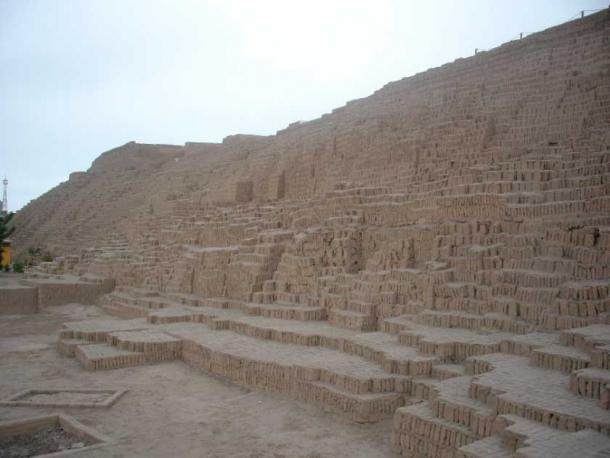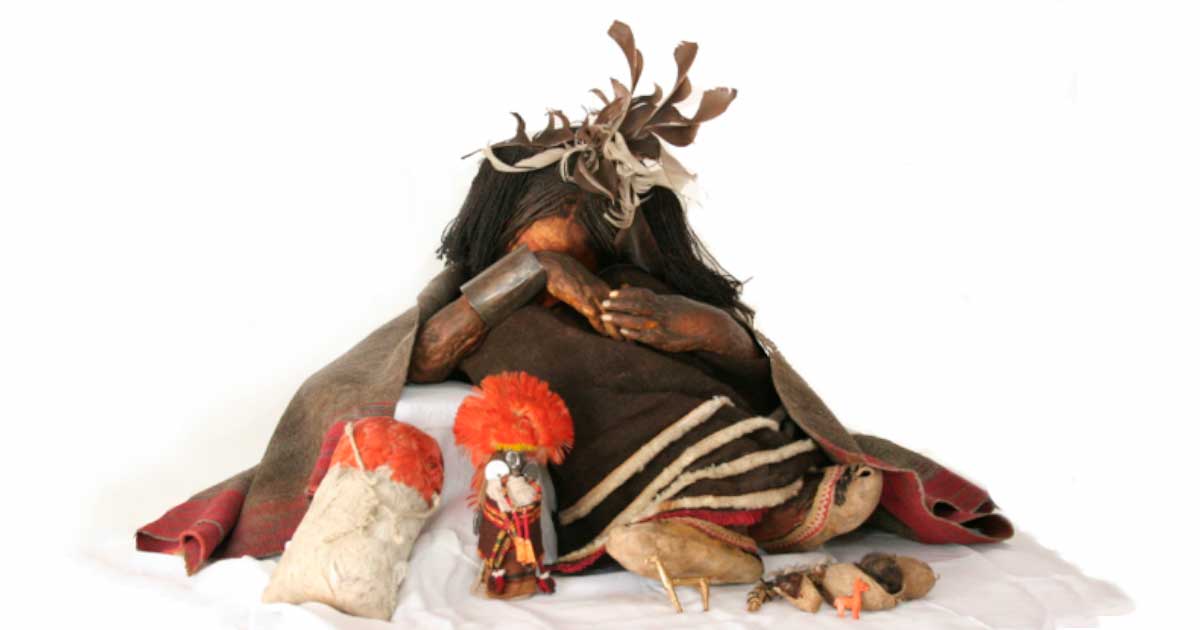Capacocha: Ritualized Child Sacrifice in the Inca Empire
The Inca were an impressive people. From the 1400s to 1532, they created an empire so large it spread from modern Ecuador to central Chile. Master builders that rivaled the ancient Egyptians, their impressive temples are still standing today. But what they are best remembered for today is their religion. The Inca had many religious ceremonies that were centered around sacrifices - the most shocking of which was capacocha - the sacrifice of young children.
What was the Capacocha Ceremony?
The capacocha ceremony was a major part of the Inca religion. It was a ritual that featured the sacrifice of carefully selected children from across the Inca Empire. There were several situations under which the capacocha might take place.
The capacocha was often tied to the key events in the life of the Sapa Inca, the Inca Emperor. For example, a capacocha would be held for an ascension, if the emperor was ill, died, or if he had a son. Other times, a capacocha might be held to prevent or stop a natural disaster, or as part of a festival.
The actual sacrifices were usually carried out at important shrines known as huacas on mountain tops. The methods used were relatively humane, if such a word can be used to describe human sacrifice. Most commonly, the children died from exposure after being left in the cold, or died in their sleep after being drugged. There is also evidence that some children died by strangulation or through asphyxiation after being buried alive.
The less violent nature of these sacrifices is not surprising when one considers that these sacrifices were not a punishment. Instead, the children were carefully selected. It is thought the Inca believed they were sending their ‘best’ to join the gods.
- Blood for the Gods: 10 Cultures that Engaged in Ritual Sacrifice
- 12 Absolutely Amazing Artifacts of the Inca

A 1615 drawing thought to be of a capacocha ceremony (Public Domain)
The Capacocha Selection Process
The selection process was a little bit reminiscent of the method in The Hunger Games movies. Children of both sexes were gifted to the state as a tribute by local communities on a yearly basis. Every region in the empire, no matter how small, was obligated to provide a sacrifice.
The male children were always pre-pubescent, no older than ten years old. The girls could be up to sixteen years old, but had to be virgins. The children had to be perfect specimens, no freckles or scars were allowed. Simply put, the children had to be beautiful. Only the purest children were worthy of being sent to live with the gods.
Rather than having your child chosen being seen as a punishment, most families considered it a great honor. Noble families would often fix it so that their children were picked, as a way to win the emperor’s favor.
The process for boys and girls was slightly different. Boys, once selected, were sent straight to the Inca capital, Cuzco. The girls or, aqlla (chosen women) as they were known, were first sent to the aqlla wasi, or ‘house of chosen women,’ to meet the mama-kuna, a group of matriarchs similar to nuns.
Once there, the girls were educated by priestesses in the arts of weaving, sewing, and preparing special spiritual beverages called chicha. At around the age of 14, the girls would then be split into three groups.
The lucky ones were kept on and consecrated as priestesses. It was their job to help raise the next batch of young girls. The second group, usually the prettiest, was sent out for sacrifice at the state capacocha ceremonies. The third group was either sent to the emperor in Cuzco to act as servants or concubines, or split between Cuzco’s noblemen as secondary wives. It’s not exactly clear which was the worst fate.
Capacocha Festivals in Cuzco
Capacocha sacrifices usually started in Cuzco at the behest of the Sapa Inca. The tradition dates back to Pachacuti (1418-1472), who was the first emperor to order the sacrifices. Capacochas started with a festival, during which it was decided which shrines would get which offerings. The shrines would get varying amounts of offerings, of differing quality.
- 76 Pre-Inca Child Sacrifices Found at Peru’s Pampa La Cruz site
- Hundreds of Children were Sacrificed in Peru, But Why?

Pachacuti, the ninth Sapa Inca, is the Inca emperor who is believed to have started the tradition of capacocha ritual child sacrifice. Cuzquenian painting from the 17th century, unknown artist. (Public Domain)
Throughout the festival at Cuzco, it was important that the children were well looked after. Besides being dressed in royal finery, they were spoiled and well-fed. This was because, in Inca tradition, it was vitally important that the children reached the gods in a happy state.
When ready, the children were paired off, a girl and a boy, and dressed in fine royal garb. They were then paraded around the statues of the Creator, the Sun god, the Moon god, and the Thunder god. At the end of this procession, the priests divided the children and other sacrifices into four groups, one for each of the suyus, or regions of the whole Inca empire, Tawantinsuyu.

In addition to the child sacrifices central to capacocha, many offerings were sent to the shrines as well (Jose Fontanelli / CC BY 2.0)
A Sacrificial High
The next step was to send the children and the priests back to their communities. This was no easy journey. On the way to Cuzco, they had been allowed to use the royal road, or Inca road, as it was commonly known. On the return journey, they were banned from doing so.
Instead, to reach their communities they had to travel as the crow flies, in a straight line. This was most likely done by following the ceque lines, a series of ritual pathways that emanated outwards from Cuzco to the various wak’akuna shrines. This was a long, arduous journey that could involve crossing deadly valleys, rivers, and mountains. For the most difficult-to-reach wak’akuna, the journey could take months.
Upon their arrival, it was time for the sacrifice. The Inca believed the children needed to die happy, and so they were drugged. Historians originally believed that the Inca used coca leaves and a corn beer called chicha to intoxicate the children. But today, it is believed the Inca used something a little more interesting: ayahuasca.
Ayahuasca is a powerful drug with hallucinogenic properties. Archaeological evidence suggests the Inca’s predecessors, the Huari, used the drug, but for a long time no evidence was found of it being used at capacochas. The Inca didn’t have a writing system, and so the only first-hand accounts we get are from Spanish chroniclers. They described how the priests and children drank something which made them act strangely, but were never 100% sure what it was. The Spanish just put it down to alcohol.
Our understanding changed recently, when a team of archaeologists did a toxicology analysis on the soft tissues of two capacocha victims. The two children, a 15-year-old and a child under the age of ten, were found frozen in 1995 on the top of the Ampato Mountain, a dormant volcano in the Andes Cordillera of Peru.
Test results suggested the children had chewed coca leaves and drunk a beverage made of ayahuasca in the two weeks leading up to their deaths. It is believed the Inca used the drug as a kind of antidepressant to make sure the children were happy when they died. The gods wouldn’t have been pleased with unhappy gifts after all.

One of the capacocha victims found on Ampato Mountain, called Juanita, the Ice Maiden (Martine / CC BY NC 2.0)
Methods of Capacocha Sacrifice
Once the children were suitably dosed up on coca leaves and ayahuasca, it was time for the deed to be done. If the children were lucky, the capacocha ceremony was held somewhere particularly high up and cold. In these cases, the dosed-up children would slip into a deep sleep and die from hypothermia. They never felt a thing.
At Llullaillaco, three bodies of three children have been found so far. These also appear to have had relatively peaceful deaths. It is believed two died in their sleep and one died through asphyxiation.
In other cases, the method of sacrifice was a touch more violent. At different sites, different methods have been found. A child found on top of Aconcagua (a mountain in Peru) was killed with one decisive blow to the head. Another mummy, known as the “Queen of the Hill” was found with a puncture wound in her thorax that had entered through her back. A quick, but not painless, death.

One of the female capacocha victims recovered from Llullaillaco (GrooverPedro / CC BY 2.0)
Non-Human Sacrifices in Capacochas
Capacochas didn’t just consist of human offerings. Human statuettes and llama figurines, made of gold, silver, and shells were also buried with the children. The figurines were usually a male and female pair, probably in tribute to the male Sun god and female Moon goddess.
Alongside these statues, offerings of ceramics, silver, and bronze were also common. Much like in the case of Egyptian burial plates, bowls and other everyday items were also commonly found at burial sites - everything a child might need in the next life.

Some of the grave goods included in capacocha ceremonies were quite elaborate and valuable (JimmyHarris / CC BY 2.0)
Historical Evidence of Capacocha
The lack of a written record from the Inca can make studying and understanding their beliefs and rituals more than a little difficult. How, then, do we know so much about capacochas?
The best description we have of a capacocha comes from Cristobal de Molina, a Spanish chronicler who spent most of his adult life in Cuzco. From him, we learned that capacochas were often tied to the ascension of a new emperor. He described how all towns within the empire were called to send young girls and boys to the capital, as well as rolls of fine cloth and figurines made from precious metals. He noted how the children were dressed in the finest clothes and matched up as if married. It was also Molina who explained how the sacrifices were split up and sent back to their communities.
Besides Molina and other Spanish chroniclers' accounts, we have some archaeological evidence to speculate from, but not much. Archaeologists have found surface evidence of human sacrifices and burials at Inca shrines, but there is a large discrepancy compared to the records of chroniclers like Molina.
The chroniclers describe thousands being sacrificed, but only a handful of victims have turned up so far during archaeological digs. Besides the low number of bodies, what archaeologists have found seems to back up Molina’s records. Perhaps more bodies will be found as digs continue.

Capacocha child sacrifice selections were sent back to their local shrines high on drugs to numb any fear. The Inca shrine Huaca Pucllana, near Lima, Peru. (Public Domain)
Conclusion
The idea of a child sacrifice is almost impossibly difficult to get one's head around. How could loving parents send their children to their deaths? What were they thinking?
Before we judge them too harshly, it must be remembered that to the Inca, to have your child chosen was the ultimate honor. Communities would commemorate the children long after their deaths. The parents didn’t see it as killing their children. Their children were being sent to serve the gods in the afterlife. To them, being sacrificed was a blessing.
It must also be remembered that the death of the children was seen as a necessary evil. The Inca believed that their gods would rain down natural disasters like floods, earthquakes, and famines if they didn’t receive regular sacrifices.
Top image: This capacocha victim, a boy recovered from Cerro El Plomo in 1954, was the first finding of its kind to be the subject of scientific studies. Pictured with excavated grave goods: a female silver statuette, gold llamas and spondylus shell, a chuspa stuffed with coca leaves, scrotum and animal intestine bags with clippings of nails, hair and teeth, and a silver bracelet. Source: Jisa39 / CC BY SA 4.0
By Robbie Mitchell
References
Besom, T. 2009. Of Summits and Sacrifice: An Ethnohistoric Study of Inka Religious Practices. University of Texas Press
Guenot, M. April 23, 2022. Incas gave children selected for ritual sacrifice the ayahuasca drug to help reduce anxiety, scientists think. Insider. Available at: https://www.businessinsider.com/inca-child-sacrifice-ayahuasca-used-as-antidepressant-peru-mummies-show-2022-4
Handwerk, B. July 29, 2013. Inca Child Sacrifice Victims Were Drugged. National Geographic. Available at: https://www.nationalgeographic.com/culture/article/130729-inca-mummy-maiden-sacrifice-coca-alcohol-drug-mountain-andes-children
MacQuarrie, K. August 4, 2013. Why the Incas offered up child sacrifices. The Guardian. Available at: https://www.theguardian.com/science/2013/aug/04/why-incas-performed-human-sacrifice




















Comments
You’re mixing two different things, and thus getting it wrong. First, there would be the bodies, bones or mummies, of the prior culture, responsible for all the metal and stonework, that succumbed in the Atlantis event that caused the Ice Age (circa 115k BC, adding the zero back to Plato’s timeline). This was a cave/cavern culture – they lived down there, and died suddenly, possibly from nuclear radiation fall-out, which created a sterile atmosphere that preserved the flesh.
And two, the Inca, like any ancient culture, would have had a practice, to essentially ‘cull the herd’ which was them, by ending (sacrificing) the lives of selected children who were considered non-viable, sickly or inferior for some reason. Only in modern times, are sickly, disabled, deformed-at-birth children cared for and integrated somewhat into society. And so, when the critical decision is made, the child is drugged, its life given back to the maker to reincarnate, in a very respectful/sad but loving way. All the tribe would understand and accept the unfortunate reality.
To mix the two very different things is, ...what's the word, ...unenlightened? Or just knee-jerk deception?
Nobody gets paid to tell the truth.